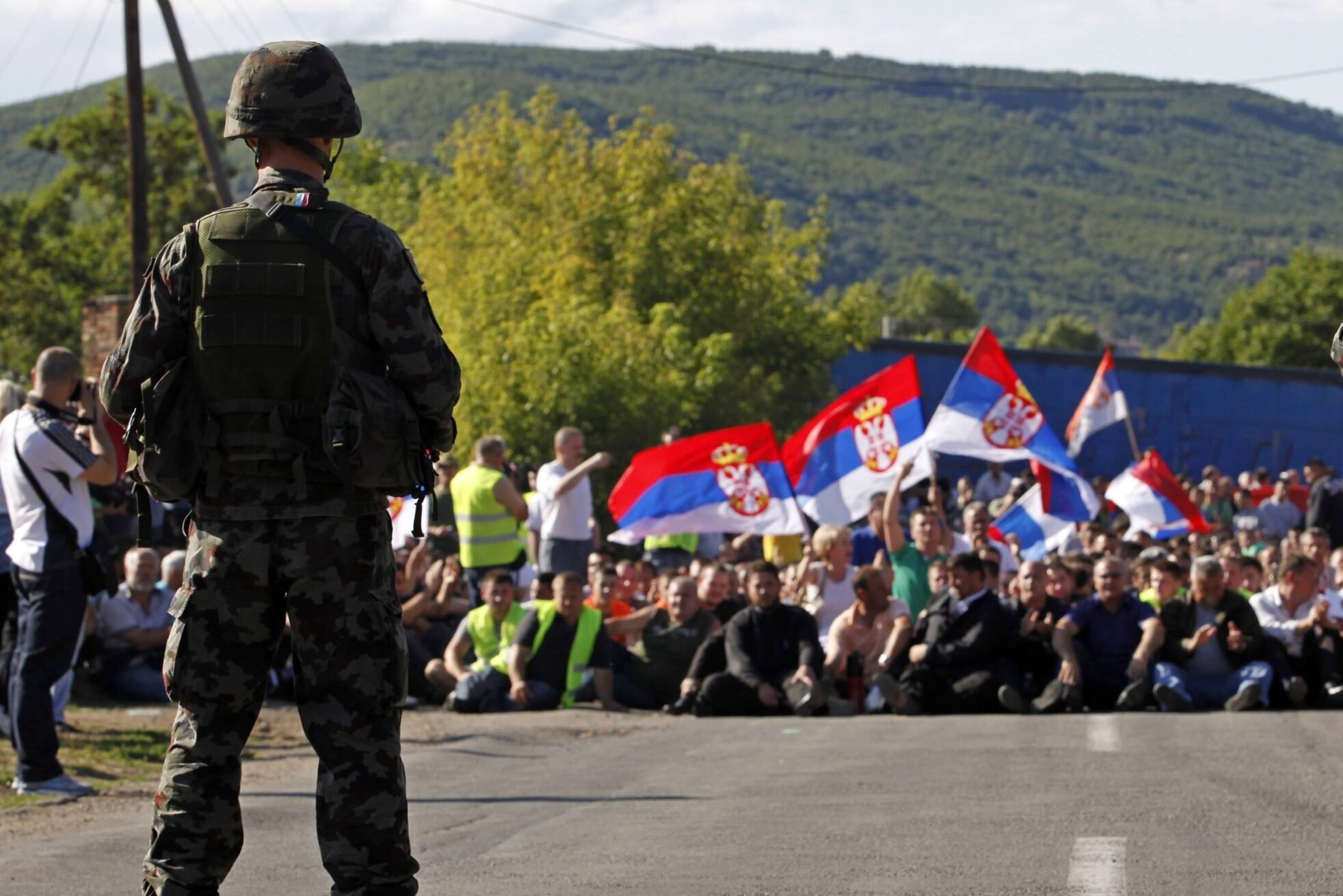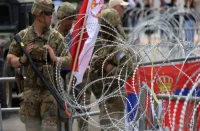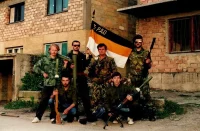As the New Year approaches, Kosovo, a rebellious part of Serbia with a predominantly Albanian population, has been once again added to the list of active hotspots. The debate over the role of Russia in it has again intensified. After a series of severe provocations, the Kosovo authorities announced an application for EU membership. Of course, it is unrealistic to approve such an application because five EU countries have not recognized its independence. But the problem is that a new round of the conflict can lead to enhancing of KFOR and European Mission (EULEX) forces, which will act in the interest of the Kosovo authorities, however, not for the sake of EU membership, but to make Belgrade obedient.
The UN Security Council’s resolution 1244 (of June 10, 1999), which defined Kosovo as part of the Federal Republic of Yugoslavia (FRY) is now the legal basis for the relations between Belgrade and Pristina. At that time, Yugoslavia itself was a federation of Serbia and Montenegro. On the one hand, formed after the collapse of the “Greater Yugoslavia” (SFRY), it was a party to the Dayton Accords; on the other hand, the authority of the FRY was never unanimously recognized at the UN.
If we mentally cover the period of disintegration of the SFRY as a whole, we can see that it took place under semi-legitimate representation of Yugoslavia in international institutions. Serbia, as the de facto basis of Yugoslavia, was gradually left with volumes of agreements, resolutions and treaties, but it was not given a full-fledged opportunity to assert itself. In such circumstances, the Kosovo issue was just waiting its turn.
But if the Kosovo conflict itself was predetermined, were there any options for resolving it in Serbia’s favor possible after the NATO operation in 1999? Strangely enough, the answer to this question was rather positive, subject to certain conditions. And, in addition to support from Moscow, the full international status of a unified state was again of great importance.
But here another link turned out to be weak: Montenegro, formally allied with Belgrade. Without leaving the FRY, and then offering the format of a confederation for the purposes of legitimization in the UN, its leader, M. Djukanovic, was gradually growing an economic system separate from Belgrade, which was facilitated by several factors, one of which was the military and commercial port of Bar.
And cigarette smuggling, an important part of the shadow business in the EU, is only one of many issues. There was also close work with Albanian and Kosovo structures. After the NATO operation the second largest military base in the world, Bondsteel, the main point in the logistics of the U.S. military campaign in Afghanistan was organized in Kosovo, to which not only tired American soldiers were moved. And Djukanovic’s ruling clan in Montenegro was involved in it, having contacts with NATO and U.S. generals, Secretary of State M. Albright, and Kosovo Albanian leader H. Taci.
 In 2003, Serbia and Montenegro became united and recognized international entity, but only formally. Even then, Montenegro began receiving separate invitations to join the EU. In 2006, Montenegro conducted a referendum on the withdrawal from the union with Serbia, and Belgrade was left alone with the Kosovo issue. And in 2008, Kosovo unilaterally declared its independence from Serbia.
In 2003, Serbia and Montenegro became united and recognized international entity, but only formally. Even then, Montenegro began receiving separate invitations to join the EU. In 2006, Montenegro conducted a referendum on the withdrawal from the union with Serbia, and Belgrade was left alone with the Kosovo issue. And in 2008, Kosovo unilaterally declared its independence from Serbia.
It is possible, of course, to argue that Moscow did nothing in these conditions, but during this period Russian investments were actively directed to Montenegro, the list of economic preferences and the range of goods for duty-free trade were created and expanded, and, of course, cooperation in the energy sector was developing. What Russia really did not do was not trying to bribe or pressure the elites in the region, which had traditionally positioned itself as pro-Russian.
Nevertheless, the coming to power of the “multi-vector” Vucic’s team was largely due to the Serbs’ desire to adapt to a situation in which there was no alternative to continuing a dialogue with Pristina in exchange for the illusory prospect of EU membership.
After the events in Ukraine, the Kosovo authorities did not hesitate to escalate time after time. Only half of the UN member states have recognized Kosovo. And the EU firmly tied Belgrade’s recognition of Kosovo’s independence to EU membership. But even the rapidly losing sense of proportion in the U.S. establishment understood that simply “separating” Kosovo meant a massacre in the center of Europe.
In 2013 the EU made concessions to Belgrade and persuaded Pristina to sign the Brussels agreements on the normalization, under which Kosovo authorities were not prevented from creating local Serb self-governments. It was not implemented, but it allowed Brussels to officially start work on signing the Support and Association Agreement (SAA) between the EU and Pristina. Even earlier, Kosovo had just de facto entered the euro zone.
In 2015, the SAA was formalized, and since then, no one has cancelled Kosovo’s European integration processes and is not going to do so.
In 2017 Kosovo opened its border with Albania, which recognized the province’s independence. The opening of the border meant actually blocking the border between Serbia and Kosovo, which were formally one state. All this gave rise not only to a lot of clashes and incidents, but also gave birth to the so-called “Vucic formula”, according to which Kosovo should be divided into Serbian and Albanian parts, and then negotiations on recognition or non-recognition should begin. This formula almost caused a government crisis in Serbia, as it means not only de facto, but also de jure borders of Belgrade’s control in the province.
But the Kosovar authorities are not going to negotiate. They continue to act in a provocative manner. There are dams and power plants on the Serbian side, and apart from occasional shouts from Brussels and Washington, to which they react weakly, there is nothing to hold them back.
At the end of his rule, D. Trump organized signing the Washington agreements on normalization between Kosovo and Serbia, according to which Serbia, and therefore, naturally, Russia helping it, will not try to reverse the recognition of Kosovo’s independence and Pristina will not apply to international organizations. But in reality, Trump, in his usual manner, simply got Serbia’s embassy moved to Jerusalem and a number of Serbian agreements with China cancelled, including military agreements. Serbia got problems with the Arab world and a new crisis.
In 2022, the Kosovo crisis is exacerbated by new kidnappings and beatings by the Serbian police, shootings at the Gazivode power plant, and the cancellation of traffic with Serbian license plates. Settlement of these incidents by Washington and Brussels requires from A. Vucic another concession on the position towards Russia.
Everything is being arranged in such a way as to show the Serbian population that the Russian-Serbian relations are outdated. Vucic is being demanded to join the anti-Russian sanctions. And the Serbian leader needs to justify them somehow. In fact, his criticisms of Russia’s statements on the Kosovo issue and the conflict in Ukraine are devoted to this very thing.
Thus, as cynical as it may seem, the current crisis in Kosovo performs the function of forcing Serbia to join Western anti-Russian sanctions. It is clear that Belgrade does not want to lose substantial discounts on Russian gas during the energy crisis. But supporting sanctions has nothing to do with the provisions of Resolution 1244, which Moscow cannot abandon. It does not prevent the EU and Kosovo from implementing integration mechanisms. But it is already demanding from Belgrade to state itself definitely and loudly. At the same time, the armed conflict in Serbia poses unacceptable military and political risks for the United States and its allies. Therefore, Belgrade has a wide window of opportunity. Whether it will want to and will be able to use it is another question.














Comments